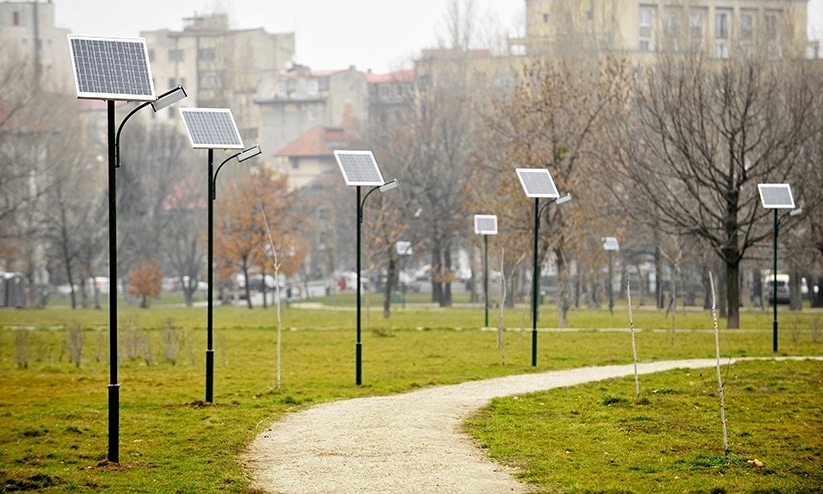Lighting Up the Streets with Solar Power: The Rise of Solar Street Lighting
Introduction:
As urbanization and population growth continue to accelerate, the need for safe, reliable, and cost-effective lighting solutions in cities and towns is more pressing than ever. Traditional street lighting systems have been the norm for decades, but they come with several drawbacks, such as high energy consumption, maintenance costs, and environmental impact. Fortunately, a new technology is changing the game: Solar Street Lighting. In this article, we will explore the benefits, challenges, and applications of Solar Street Lighting, and why it’s the future of public lighting.
Benefits of Solar Street Lighting:
- Energy Efficiency: Solar Street Lighting uses renewable energy from the sun to power its LED lamps, making it a highly energy-efficient and sustainable solution. This means lower electricity bills, reduced carbon emissions, and a smaller environmental footprint.
- Low Maintenance: Unlike traditional street lights that require frequent bulb replacements and wiring repairs, Solar Street Lighting systems are virtually maintenance-free. The solar panels and batteries can last up to 25 years or more, and the LED lamps can operate for over 50,000 hours, reducing the need for costly and time-consuming maintenance.
- Easy Installation: Solar Street Lighting systems are easy to install and operate, without the need for complicated wiring or trenching. This makes them ideal for remote or off-grid areas, where traditional lighting solutions are not feasible.
- Versatility: Solar Street Lighting can be customized to fit various lighting needs and requirements, such as brightness levels, color temperatures, and motion sensors. This makes them suitable for a wide range of applications, from urban streets and highways to rural roads and parking lots.
Challenges of Solar Street Lighting:
- Initial Cost: While Solar Street Lighting offers long-term cost savings, the initial investment can be higher than traditional lighting systems. However, this cost can be offset by lower energy bills and maintenance costs over time.
- Weather Dependence: Solar Street Lighting relies on sunlight to charge its batteries, which means it may not work efficiently in areas with limited sun exposure or during cloudy days. However, modern Solar Street Lighting systems can store excess energy and use it during low-light conditions.
- Design Constraints: Solar Street Lighting systems require adequate space for solar panels and batteries, which can limit their design flexibility and aesthetic appeal. However, manufacturers are constantly developing new designs and technologies to overcome these limitations.
Applications of Solar Street Lighting:
- Urban Lighting: Solar Street Lighting is ideal for illuminating urban streets, sidewalks, and public spaces, providing safety and visibility for pedestrians and motorists. It can also enhance the beauty and ambiance of urban environments, especially when customized to fit the design and style of the surrounding architecture.
- Rural Lighting: Solar Street Lighting can bring light to remote or off-grid areas that lack access to traditional lighting solutions, such as rural roads, farms, and villages. It can also provide security and safety for residents in these areas, reducing the risk of accidents and crime.
- Commercial Lighting: Solar Street Lighting can be used for commercial and industrial purposes, such as parking lots, airports, and warehouses. It can provide bright and consistent lighting without the need for expensive wiring or electricity bills.
FAQs:
-
How does Solar Street Lighting work?
Solar Street Lighting systems use solar panels to convert sunlight into electricity, which is stored in batteries. The batteries power LED lamps that provide lighting during the night or in low-light conditions. Some systems may also include motion sensors, which activate the lamps when movement is detected.
-
How long do Solar Street Lighting systems last?
Solar Street Lighting systems can last up to 25 years
Conclusion:
Solar Street Lighting is a game-changing technology that offers numerous benefits over traditional lighting systems. It provides energy efficiency, low maintenance, easy installation, versatility, and sustainability, making it an ideal solution for public lighting in urban, rural, and commercial areas. While it may come with some initial costs and design constraints, the long-term savings and positive environmental impact make it a worthwhile investment for any community. With the ongoing advancements in solar technology, we can expect to see even more innovative Solar Street Lighting solutions in the future, bringing light and safety to more communities around the world.
So, if you’re considering upgrading your lighting system, Solar Street Lighting is definitely worth considering. Contact your local solar lighting provider today to learn more about how Solar Street Lighting can benefit your community.
Don’t wait until it’s too late to switch to sustainable and cost-effective lighting solutions. Let Solar Street Lighting light up your streets and lead the way to a brighter, safer, and greener future.
Remember, Solar Street Lighting is not just a trend, it’s a smart and responsible choice for a better tomorrow.
So, go solar and shine bright like the sun!
